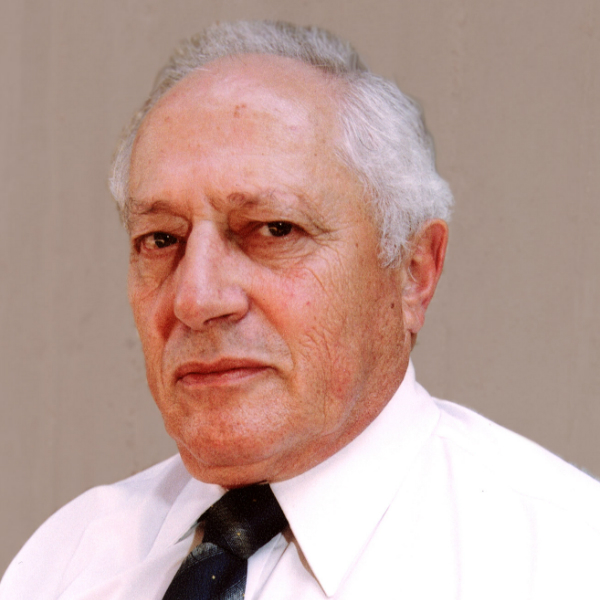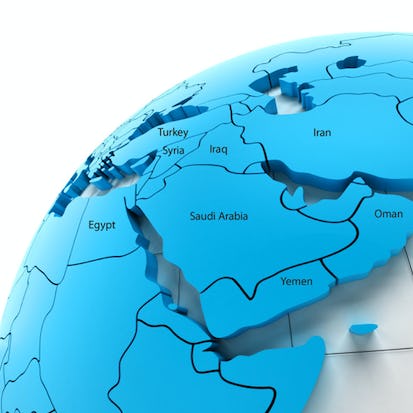- Level Foundation
- Duration 11 hours
- Course by Tel Aviv University
-
Offered by

About
This course will discuss the developments in the Middle East from the early 20th century to the present. It will discuss the rise and retreat of Arab nationalism, the problems of internal cohesion of the Arab states, issues of religion and state, and the evolution of Islamist politics. It will also focus on the evolution of the Arab-Israeli conflict and its impact on the region and will conclude with an in depth analysis of the “Arab Spring” by placing these contemporary revolutionary events in their historical context. Please note that this course builds upon a previous course - The Emergence of the Modern Middle East - Part I (https://www.coursera.org/learn/modern-middle-east-1/home/welcome) Learn about the history of the Middle East for a deeper understanding of current regional developments! This course will temporarily close for enrollment from March 1st, 2022 to August 31st, 2022. During this time, the course will be closed for new enrolments. All of the course materials will continue to be able available to previously enrolled learners; however, the course staff will not provide support in the Discussion Forums during this period. Best, The Tel Aviv University TeamModules
Week 1: Arab Independence and Revolution
14
Videos
- V. Arab Independence and Revolution
- 5.1.1 Egypt: Crisis and Revolution - Part 1
- 5.1.2 Egypt: Crisis and Revolution - Part 2
- 5.2.1 Iraq from the Overthrow of the Hashemites to Saddam Hussein - Part 1
- 5.2.2 Iraq from the Overthrow of the Hashemites to Saddam Hussein - Part 2
- 5.3.1 Syria's Prolonged Instability - Part 1
- 5.3.2 Syria's Prolonged Instability - Part 2
- 5.4.1 Lebanon's Civil Wars - Part 1
- 5.4.2 Lebanon's Civil Wars - Part 2
- 5.5. The Surprising Stability of the Arab Monarchies
- 5.5.1.1 The Surprising Stability of the Arab Monarchies: Jordan - Part 1
- 5.5.1.2 The Surprising Stability of the Arab Monarchies: Jordan - Part 2
- 5.5.2 The Surprising Stability of the Arab Monarchies: Saudi Arabia
- 5.6 The Arab Cold War
3
Readings
- Before we begin
- Suggested Readings
- Lecture Transcript
Week 2: The Arab-Israeli Conflict
15
Videos
- 6.1 Introduction: Contexts and Discourse
- 6.2 Early Zionism
- 6.3.1 Initial Arab Resistance - Part 1
- 6.3.2 Initial Arab Resistance - Part 2
- 6.4.1 The Arab Rebellion and the Jewish Response - Part 1
- 6.4.2 The Arab Rebellion and the Jewish Response - Part 2
- 6.4.3 The Arab Rebellion and the Jewish Response - Part 3
- 6.5 The Impact of World War II
- 6.6 The Anglo-American Committee of Inquiry
- 6.7.1 Partition and the First Phase of War - Part 1
- 6.7.2 Partition and the First Phase of War - Part 2
- 6.8 The Second Phase of the 1948 War
- 6.9.1 The Narratives of the 1948 War - Part 1
- 6.9.2 The Narratives of the 1948 War - Part 2
- 6.9.3 The Narratives of the 1948 War - Part 3
2
Readings
- Suggested Readings
- Lecture Transcript
Week 3: Escalation and De-Escalation of the Arab-Israeli Conflict
1
Assignment
- Week 3 Quiz
11
Videos
- 7.1.1 From 1949 to the Suez War - Part 1
- 7.1.2 From 1949 to the Suez War - Part 2
- 7.1.3 From 1949 to the Suez War - Part 3
- 7.2.1 The Revival of the Palestinian Identity - Part 1
- 7.2.2 The Revival of the Palestinian Identity - Part 2
- 7.3.1 The Deterioration to War in 1967 - Part 1
- 7.3.2 The Deterioration to War in 1967 - Part 2
- 7.3.3 The Deterioration to War in 1967 - Part 3
- 7.4 The Palestinian Struggle from Jordan
- 7.5 Black September
- 7.6 The War of Attrition, 1968-70
2
Readings
- Suggested Readings
- Lecture Transcript
Week 4: Escalation and De-Escalation of the Arab-Israeli Conflict (Part 2)
13
Videos
- 8.1.1 The October Surprise - Part 1
- 8.1.2 The October Surprise - Part 2
- 8.2.1 The Egyptian-Israeli Peace - Part 1
- 8.2.2 The Egyptian-Israeli Peace - Part 2
- 8.3 The PLO and the 1982 War in Lebanon
- 8.4.1 The First Palestinian Intifada - Part 1
- 8.4.2 The First Palestinian Intifada - Part 2
- 8.5.1 The Oslo Accords - Part 1
- 8.5.2 The Oslo Accords - Part 2
- 8.6 The Jordanian-Israeli Peace
- 8.7.1 Camp David, 2000 - Part 1
- 8.7.2 Camp David, 2000 - Part 2
- 8.8 Unilateral Disengagement and Further Negotiations
2
Readings
- Suggested Readings
- Lecture Transcript
Week 5: Middle Eastern Stateness, Islamic Revival and the "Arab Spring"
1
Assignment
- Final Test
14
Videos
- 9.1.1 The Post-1967 Middle East: The Victory of State Interest - Part 1
- 9.1.2 The Post-1967 Middle East: The Victory of State Interest - Part 2
- 9.2 The Islamic Revival
- 9.2.1.1 The Islamic Revival in Egypt, Syria and Iraq - Part 1
- 9.2.1.2 The Islamic Revival in Egypt, Syria and Iraq - Part 2
- 9.2.2 The Examples of Jordan, Algeria and the Palestinians
- 9.3.1.1 The "Arab Spring": Modernity and Tradition - Part 1
- 9.3.1.2 The "Arab Spring": Modernity and Tradition - Part 2
- 9.3.2.1 The "Arab Spring": Egypt and Tunisia - Part 1
- 9.3.2.2 The "Arab Spring": Syria, Jordan, Yemen and Libya - Part 2
- 9.4.1 The Non-Arab Countries - The Republic of Turkey : From WWII to the Present
- 9.4.2.1 The Non-Arab Countries - Iran: From the Pahlavi Dynasty to the Islamic Republic - Part 1
- 9.4.2.2 The Non-Arab Countries - Iran: From the Pahlavi Dynasty to the Islamic Republic - Part 2
- 9.5 Concluding Overview
2
Readings
- Suggested Readings
- Lecture Transcript
Auto Summary
Explore the evolution of the Middle East from the early 20th century to today in "The Emergence of the Modern Middle East - Part II." Led by Tel Aviv University, this foundational Arts & Humanities course delves into Arab nationalism, internal state issues, Islamist politics, and the Arab-Israeli conflict, concluding with an analysis of the "Arab Spring." Ideal for those seeking a comprehensive understanding of regional developments. Duration: 660 minutes. Available through Starter and Professional subscriptions on Coursera.

Professor Asher Susser


